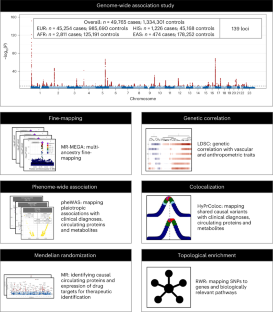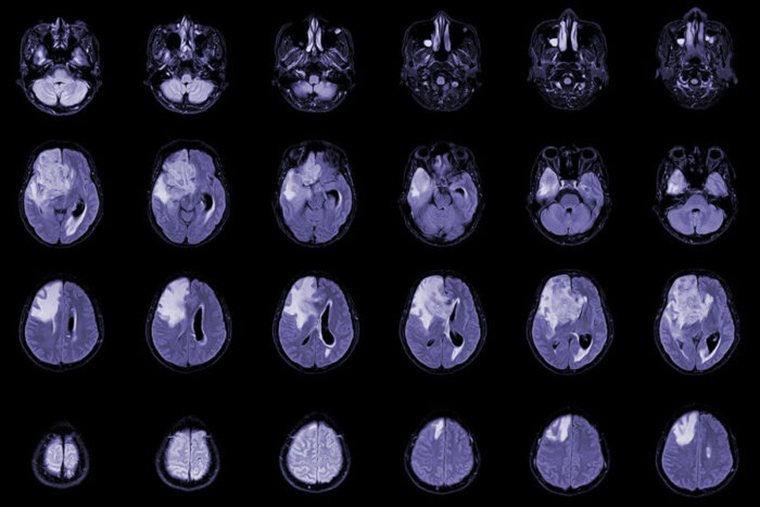2023-01-30 オークリッジ国立研究所(ORNL)
◆退役軍人省が主導するこのプロジェクトで、ORNLの科学者は、退役軍人省のMillion Veteran Program(MVP)のデータと、その他4つのグローバルなバイオバンクの健康データの情報を分析しました。これは、大規模な集団のゲノムを用いて、その集団の特定の形質(この場合は、典型的には足腰の静脈がねじれ、肥大する疾患)に関連する小さな遺伝子変異を探索するものである。
◆Nature Cardiovascular Research』誌に詳述されているように、このプロジェクトでは、静脈瘤のある約5万人と、この病気にかかっていない約130万人のデータが調査されました。解析には、新しい機械学習とネットワーク生物学のツール、およびORNLにあるDOE Office of Scienceのユーザー施設であるOak Ridge Leadership Computing Facilityのスーパーコンピューティングリソースが使用されました。
◆研究者たちは、静脈壁を弱め弁を損傷する静脈内の血圧上昇、炎症と免疫細胞の活性化および接着、血管壁のリモデリング、新しい静脈や分岐静脈の形成、傷が治らないなど、静脈瘤のリスクとなる形質の遺伝的起源を見つけることに重点を置きました。また、このプロジェクトでは、静脈瘤と他の血管疾患との間に、遺伝的な重複があることも発見されました。
◆139の危険遺伝子座(特定の病気の危険因子の遺伝子が存在する染色体上の場所)の生物学的解釈は、ORNLの科学者がこのプロジェクトにもたらしたシステムレベルのアプローチによって強化されました。このアプローチでは、1つの疾患には1つの遺伝子のつながりしかなく、むしろ多くの遺伝子が疾患の進行を引き起こす可能性があることを認識しています。
<関連情報>
- https://www.ornl.gov/news/computational-study-finds-genetic-links-therapy-targets-varicose-veins
- https://www.nature.com/articles/s44161-022-00196-5
静脈瘤の遺伝学的研究により、動脈および静脈疾患との多遺伝子構造および遺伝的重複が明らかになった Genetics of varicose veins reveals polygenic architecture and genetic overlap with arterial and venous disease
Michael G. Levin,Jennifer E. Huffman,Anurag Verma,Kyle A. Sullivan,Alexis A. Rodriguez,David Kainer,Michael R. Garvin,Matthew Lane,Mikaela Cashman,J. Izaak Miller,Hyejung Won,Binglan Li,Yuan Luo,Gail P. Jarvik,Hakon Hakonarson,Elizabeth A. Jasper,Alexander G. Bick,Philip S. Tsao,Marylyn D. Ritchie,Daniel A. Jacobson,Ravi K. Madduri & Scott M. Damrauer
Nature Cardiovascular Research Published:09 January 2023
DOI:https://doi.org/10.1038/s44161-022-00196-5

Abstract
Varicose veins represent a common cause of cardiovascular morbidity, with limited available medical therapies. Although varicose veins are heritable and epidemiologic studies have identified several candidate varicose vein risk factors, the molecular and genetic basis remains uncertain. Here we analyzed the contribution of common genetic variants to varicose veins using data from the Veterans Affairs Million Veteran Program and four other large biobanks. Among 49,765 individuals with varicose veins and 1,334,301 disease-free controls, we identified 139 risk loci. We identified genetic overlap between varicose veins, other vascular diseases and dozens of anthropometric factors. Using Mendelian randomization, we prioritized therapeutic targets via integration of proteomic and transcriptomic data. Finally, topological enrichment analyses confirmed the biologic roles of endothelial shear flow disruption, inflammation, vascular remodeling and angiogenesis. These findings may facilitate future efforts to develop nonsurgical therapies for varicose veins.


